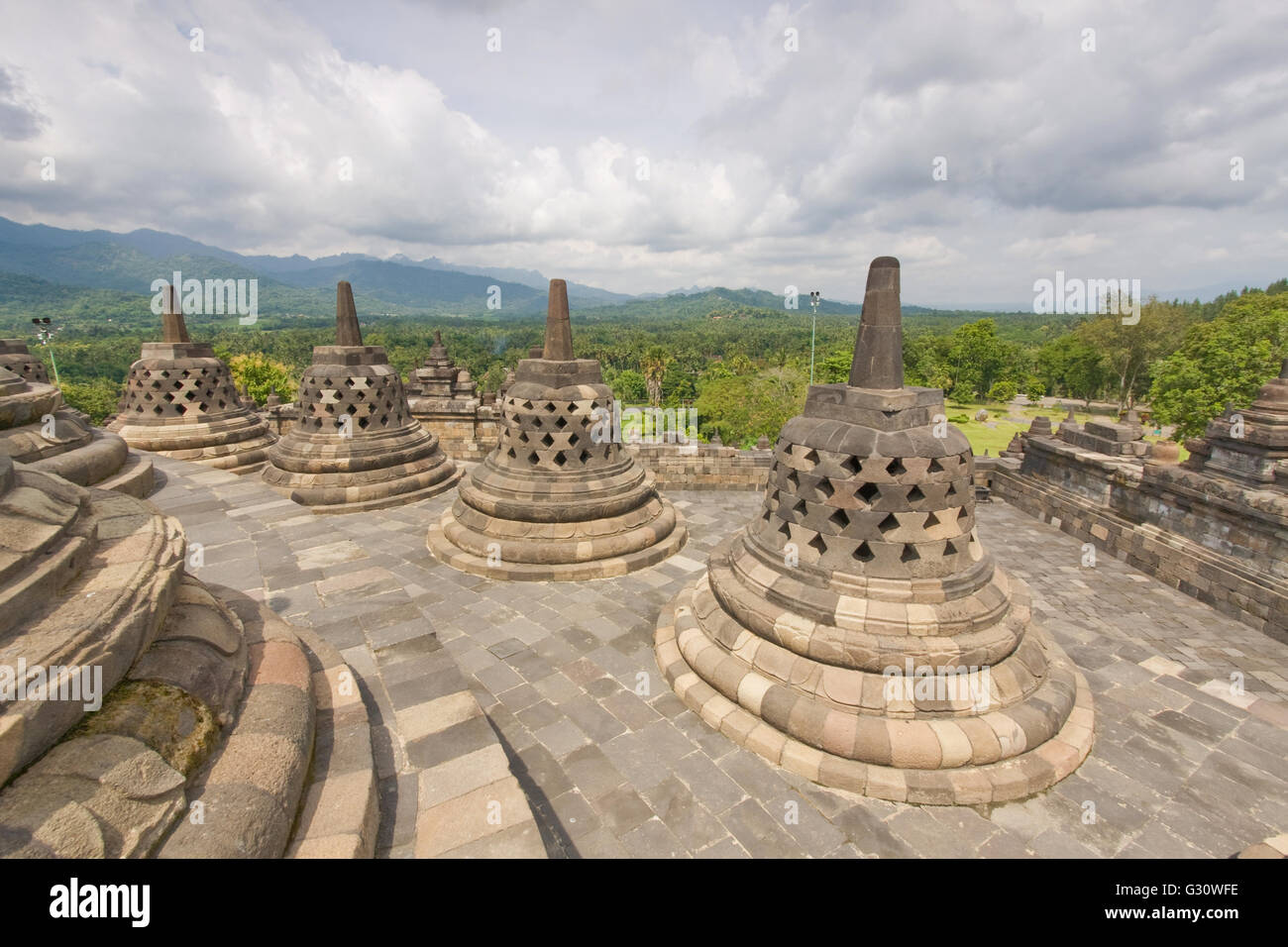Imagine a world where ancient stone whispers tales of enlightenment, where mist-shrouded valleys cradle a monument of profound spiritual significance, and where the first rays of dawn paint a landscape of unparalleled beauty. This isn’t a dream; it’s the captivating reality awaiting you at Borobudur, Indonesia. For discerning travelers seeking both inspiration and awe, exploring the Borobudur temple scenic viewpoints offers an unforgettable journey into the heart of Javanese culture and natural splendor.
Highlights: A Symphony of Stone and Sky
The sheer grandeur of Borobudur, the world’s largest Buddhist temple, is an experience in itself. But to truly appreciate its majesty, one must seek out its famed scenic viewpoints. The most iconic, without a doubt, is the breathtaking sunrise from Punthuk Setumbu or Setumbu Hill. Perched just a short distance from the main temple complex, this viewpoint offers an ethereal spectacle. As darkness slowly recedes, the silhouette of the colossal stupa gradually emerges from a sea of mist, backdropped by the vibrant hues of the rising sun and the majestic peaks of Mount Merapi and Mount Merbabu. It’s a moment of profound silence, punctuated only by the distant sounds of nature, where time seems to stand still. Can you truly grasp the feeling of witnessing centuries of history awaken with the new day?
Beyond the iconic sunrise hills, the temple itself provides its own incredible vistas. Ascending the nine levels of Borobudur, past thousands of intricate relief panels depicting Buddhist cosmology, you’ll reach the circular terraces adorned with bell-shaped stupas. From these upper platforms, the panoramic views are simply astounding. Lush green rice paddies stretch to the horizon, dotted with traditional villages and framed by the dramatic Menoreh Hills. The atmosphere here is deeply spiritual and serene, a testament to the meticulous craftsmanship and devotion of its ancient builders. Each corner offers a new perspective, a different angle to capture the temple’s architectural brilliance against the backdrop of Java’s stunning natural beauty.
Activities: Beyond the View

While the scenic viewpoints are undeniably a major draw, your visit to Borobudur can be so much more. After soaking in the sunrise magic, take your time to thoroughly explore the temple. Walk the circumambulation paths, tracing the narrative of the Buddha’s journey. Allow the detailed carvings to transport you to another era. Many find a quiet moment for reflection or meditation amidst the ancient stones, connecting with the profound sense of peace that permeates the site.
For a deeper dive into local life, consider cycling tours through the surrounding villages like Candirejo. You’ll pedal past verdant rice fields, witness traditional batik making, pottery, or learn about palm sugar production. It’s an authentic glimpse into the daily rhythms of rural Java, offering a beautiful contrast to the ancient grandeur of the temple. You might even stumble upon a local performance or a vibrant market. And for a quirky, yet fascinating side trip, the nearby "Chicken Church" (Gereja Ayam) offers another unique viewpoint and an intriguing story.
Travel Tips: Your Essential Guide to Borobudur
Ready to embark on this incredible journey? Here’s what you need to know:
- Best Time to Visit: The dry season (May to September) offers the most reliable weather for clear skies and stunning sunrises. For the iconic sunrise experience from Punthuk Setumbu, you’ll need to arrive well before dawn, typically around 4:00 AM. Regular temple hours usually start at 6:00 AM.
- How to Get There: Borobudur is approximately 40 km northwest of Yogyakarta, the nearest major city with an international airport (YIA). You can hire a private car with a driver, take a local bus (a more adventurous but budget-friendly option), or join an organized tour from Yogyakarta. Many hotels in Yogyakarta also offer shuttle services.
- Entrance Fees: As of recent updates, Borobudur has separate entrance fees for international and domestic tourists. There’s also a special sunrise ticket (often purchased through local operators or the Manohara Hotel, which is inside the temple complex), which grants early access before regular opening hours. Prices can vary, so always check the official Borobudur Park website for the most current information.
- Nearby Attractions: Don’t miss the smaller, yet equally significant, Mendut and Pawon Temples, which form a spiritual complex with Borobudur. They are just a short drive away and offer deeper insights into Buddhist art.
- What to Bring: Comfortable walking shoes are essential for exploring the temple and viewpoints. A hat, sunscreen, and sunglasses are vital for daytime visits. For sunrise, a light jacket or sarong will be welcome as it can be chilly before dawn. And, of course, your camera to capture those unforgettable moments!
- Local Delights: After a morning of exploration, refuel with some delicious Javanese cuisine. Sample Gudeg, a traditional dish of young jackfruit stewed in coconut milk, often served with chicken and rice. Or try Nasi Pecel, a vibrant rice dish topped with various vegetables and peanut sauce. Don’t forget to grab some local coffee or a refreshing Es Dawet (coconut milk dessert).
- Souvenirs: Look for beautifully crafted batik fabrics, intricate wooden carvings, miniature stupas, or local coffee beans to bring a piece of Borobudur’s magic home with you.
Conclusion: A Journey for the Soul
Borobudur is more than just an ancient monument; it’s a profound experience that touches the soul. From the ethereal beauty of its scenic viewpoints at dawn to the intricate stories etched in its stone, it offers a blend of natural wonder, cultural immersion, and spiritual reflection unlike anywhere else on Earth. Are you ready to answer the call of this magnificent UNESCO World Heritage site and add its timeless beauty to your travel memories? Borobudur awaits, promising an adventure that will resonate long after you’ve returned home.


